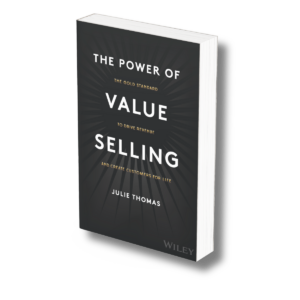Over the past several months, I’ve spent more time at my satellite office on the East Coast. It’s a beautiful location that sits along a tidal river whose shores I walk most evenings.
On these walks, I’m struck by how much the landscape changes between low and high tide and how the wildlife adapts to this constant push and pull.
It’s an excellent reminder of how prevalent change is and that this motion of advancing and falling back is baked into many elements of our lives… except the sales qualification process!
Think about it: an opp advances through the sales cycles. And it stays there.
It lives; it lives; it lives… until it dies.
In reality, the buying process is more similar to a tidal river than CRM stages. It is a continual process filled with back and forth – not a discreet event.
With that being said, I get it. It is incredibly tempting to cling to all opportunities right now. Yet, nothing will sap your energies faster than chasing opportunities that will never close.
When you eliminate no-decision opportunities from your pipeline using a sales qualification framework, you greatly increase productivity and close rates. Let’s look at how to bake this into your selling routine.
A Proven Sales Qualification Framework:
First, look at what you have to gain. In my experience from working with our clients, roughly 1/3 of all opps are won, 1/3 are lost and 1/3 result in a no-decision. If you cut no-decisions in half, you could be in for a 42% close rate.

Now, how do you get there? It all comes down to a proven sales qualification process founded on four simple questions.
Should the prospect buy?
Think about this from the prospect’s perspective. What’s driving the prospect’s need to change and to do so right now? It can only be one thing: a business issue.
You must adequately understand the complex and cross-functional problems that get in the way of key business objectives, i.e., the business issue. Once identified, it’s about effectively positioning your product/service as the unique solution to the problems that make the business issue so convoluted.
If unsure, answer the following questions:
- What is the high-level business issue?
- What are the barriers to solving it?
- What is the ideal solution to these problems?
- How does your solution solve those problems?
- How will solving these problems impact the business, the buying committee and other stakeholders?
- In the decision-maker’s mind, is your solution the best alternative?
Should the prospect buy?
You’ve checked all of the boxes above. You know the business issue inside and out and can demonstrate how your solution will directly impact it.
Is it really worth it, though?
No matter what you’re selling, you’re selling change. To serve up a compelling reason to change your product/solution must be worth it – even after you consider all of the factors that go into implementation: time/money spent, departmental priorities, organizational culture and competing initiatives.
To honestly balance the scales, answer these questions:
- How does your product/solution impact a pressing business need?
- What/Who will be involved in implementing your solution, and do you understand their needs/desires?
- Why is your solution the ideal solution when you consider competing initiatives?
- What is the projected ROI of your solution?
- What makes your ROI projections credible?
I want to call your attention to that last question. ROI is fantastic. You can throw incredible ROI stats in front of potential customers – before you do, ensure those stats are built on an unshakable foundation and believable.
Can they buy?
It will always be tempting to cling to internal champions or to engage with the member of the buying committee who responds to your calls/emails.
However, if you are not talking to the final decision-maker, you’re in for a curve ball that could cost you the deal.
Now, there are tactics you can use to access power and accelerate your relationship with these decision-makers. And it’s key to implement a plan for engaging these individuals sooner rather than later.
To see where you’re at, start with these questions:
- Who is involved in the decision?
- Have you met with everyone involved?
- Who has signing power?
When will they buy?
When you lack insight into the prospect’s buying process, you set yourself up for last-minute roadblocks. To mitigate risk, work with the buyer to outline a two-way understanding of a company’s crucial business issues and the activities required to resolve them – and put it in writing. This mutual plan is a potent tool for building buyer confidence.
Begin with these questions:
- Which departments will review the final contract?
- How long does it take to receive approval?
- Do these departments have deadlines for reviewing contracts?
- How is procurement involved?
- Who will sign the purchase order, and will they be out of the office anytime in the buying window?
As counterintuitive as it may sound, using this sales qualification framework is most crucial at times when you’re most convinced the opportunity will close. By adopting this buyer-centric framework and consistently applying it to your deals, you will maximize your selling time – and see your win rates rise as predictably as the incoming tide.
For more selling advice, check out:
- My latest book, The Power of Value Selling: The Gold Standard to Drive Revenue and Create Customers for Life. Available for pre-order and now a #1 Amazon New Release
- “Harnessing Metrics To Boost Sales Enablement Impact” in Forbes
- The latest episode of The B2B Revenue Executive Experience Podcast: “Unleashing the Power of Value Selling”
As always, Sell with Value,
-Julie









